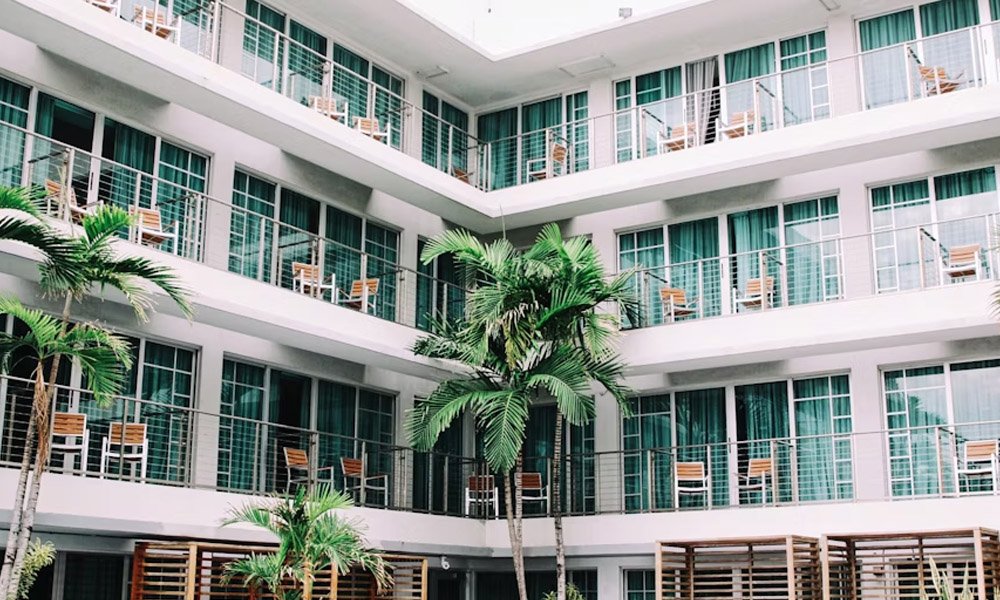Historic buildings are absolutely magical, making them a dream property purchase for many. The issue with many listed buildings, however, is, believe it or not, their size. With families smaller than ever before, many former manors and similar estates are simply too large for a single family, making them perfect for a new life as a hotel.
Luxury hotels and listed buildings go hand in hand. Not only are listed properties centrally located or on their own estate, but they’re also fully luxurious from the outset.
They’re the perfect opportunity for people looking for a unique hotel opportunity. They can even be the perfect choice for those who want to live in a listed property and turn it into a business that supports them and their family. You could even buy a derelict or ruinous property, restore it to its full grandeur, and then turn it into a hotel.
Regardless of the approach you take, this is your guide to buying and converting a historic building into a hotel in 2025.
Considerations to Make When Looking for Listed Properties
In the UK, historic buildings of significant importance are classed as either Grade I, Grade II, or Grade II*. Each comes with its own unique charm and challenges, which is why it’s critical that you understand the requirements for each grade, and what you’ll need to buy a listed property that suits your goals.
Buying a listed building is only slightly more complicated than buying a regular property. With the right people, you can easily find and buy a stunning listed property. What matters, however, is finding a property that suits your requirements and can provide a profit post-conversion. To help you achieve this, always consider the following:
Planning Approval Requirements
All three grades require planning approval for any updates that change the building’s character (i.e. anything other than historically accurate repairs). This includes additions as simple as secondary glazing (which is typically preferred to replacing the single-pane windows of older properties with double-glazing).
This is why it’s so critical to invest in hiring a qualified and experienced surveyor and to look through any work orders that the local council has previously authorised. You’ll be expected to maintain the approved works or address any issues once you’ve purchased the property.
Running Costs
Older properties also tend to have higher running costs. They’re either larger, have poorer-quality insulation, or use inefficient electric, gas, or central heating systems. You can improve some of these systems once you buy the property, but others, such as windows or insulation, may not be permitted. This is why you must have a list of all running costs, so you can compare properties based on efficiency and overall overheads. Running a hotel is expensive, and you’ll either need to price the rooms accordingly or look for another suitable property.
Insurance Costs
You’ll also need to sort out insurance, which is more expensive than for a non-listed building. This is because the insurance needs to cover the cost of fire damage and a historically accurate rebuild and restoration. Getting a complete quote is imperative to understanding your overhead costs, allowing you to compile a stronger business plan that you can then use to secure your business loan.
How to Convert a Listed Building into a Hotel
To convert a listed building to a hotel, you’ll generally need to have several planning permissions, as you’ll be changing the property’s use class from C3 (dwelling) to a hotel (C1). The good news is that you don’t need to own the property to make a planning permission application, but you will need to inform the owner. It’s important to note that, if permission is granted, it’s tied to the land/property itself, meaning that another person could use it if you don’t end up going through with the sale.
Planning Permission
You’ll need planning permission to convert a dwelling or house into a hotel (though not the other way around). To get it, you’ll need to find the local planning authority and start the application. If you don’t yet own the property, you’ll need to sign Certificate B and serve notice to the owner.
Renovation Planning
You’ll need listed building consent to make changes outside the property’s natural character. This means that changing the floor plan of the property will require prior permission. If the listed building already has multiple bedrooms (therefore making it an ideal choice for a hotel) internal alterations will be minimal, making the property prepped and ready for conversion into a hotel.
If, on the other hand, you’re planning on converting a listed property like a derelict barn, you’ll need more extensive planning permissions. Make sure you have these plans in advance, including the floor plans. Not only will they help you gain permission, but they’ll also be essential when estimating your maximum revenue.
Putting Together Your Business Plan
All that’s left is to use the information gleaned through these steps to put together a full business plan with a cost-revenue analysis, allowing you to secure the mortgage and loans necessary to convert your dream listed building into a stunning, profitable hotel.

 News3 months ago
News3 months ago
 Health2 years ago
Health2 years ago
 Technology2 years ago
Technology2 years ago
 Celebrity2 years ago
Celebrity2 years ago

















